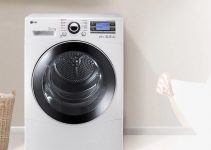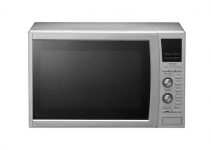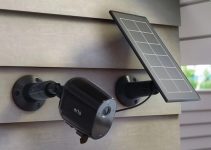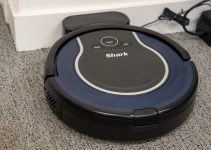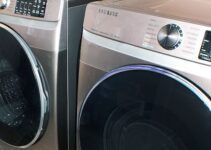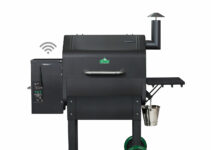Thanks to its numerous features, an LG refrigerator is a wise investment for many consumers. But before you can enjoy its benefits, it should have a working compressor.
As with most fridges, the compressor on the LG refrigerators might develop issues. Apart from knowing the cause of this problem, there are several ways by which you can deal with this issue.
In this post, you’d learn more about the possible reasons and fixes for a bad compressor. Now let’s get started.
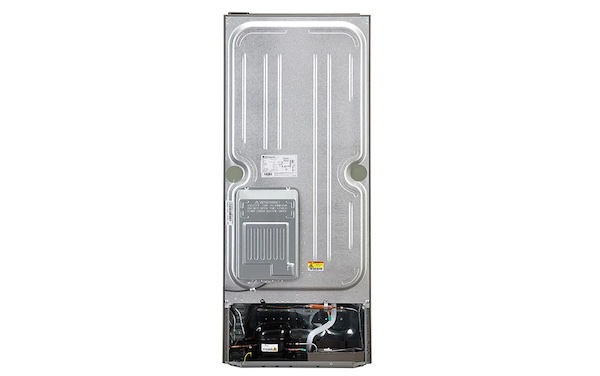
LG Refrigerator Compressor Not Running: How to Fix
Here are the various causes of a bad LG refrigerator compressor
1. Replace a Bad Thermistor
On fridges, the thermistor monitors temperature and sends the results to the control board. Then, the control board uses these readings to supply power to the compressor. If the thermistor gets damaged, the compressor will not run.
As a non-working compressor results in a warm fridge, it would help if you replaced the thermistor. If you do not have any DIY experience with fridges, you can ask for assistance from the LG Customer Service Desk.
2. Swap a Bad Start Capacitor for a New One
When the fridge comes on, the start capacitor provides energy to the compressor. If the capacitor fails, the compressor will not run as expected. In the end, you will end up with a bad LG fridge.
Instead of working on the capacitor, you should replace the unit. But before changing the capacitor, test the device with a multimeter.
3. Get a New Start Relay
Before a compressor can run, it should be switched on by the start relay and start winding. If the start relay gets damaged, your compressor will not work.
So what is the best way to solve this problem? Well, you can start by checking the start relay with a multimeter. As you check this device, look out for signs of fire damage.
You can get the fridge working by replacing the start relay. For the best results, you will have to perform this task with the help of a professional.
4. Check the Compressor
Although it is rare, the compressor itself might be the cause of the problem. But if it acts funny, the origin of the problem might be traced to an open circuit.
To get the compressor running, you will have to check for other parts that might be faulty. If everything checks out, grab a multimeter to test the compressor. After finding an open circuit on the system, you should get a new compressor or fridge.
5. Get the Ideal Amount of Refrigerant
With too much or little refrigerant, your compressor will not perform as expected. As adding refrigerants to your LG fridge comes as a technical task, you will need a professional to help with this task.
6. Get a New Fridge
As the fridge gets older, all of its parts including the compressor become worn out. Even if you care for such an item, it will not perform efficiently.
Getting a new compressor might look like a good idea. But as this component can be expensive, you should consider getting a new LG fridge.
7. Clean the Condenser Coils
Dirty coils tend to mess up the functions of your compressor. When it comes down to it, such parts push the compressor to work harder thereby resulting in wear and tear. Overall, the compressor will not run as expected.
For this reason, it is advised that you clean the fridge every 6 – 12 months. Now here are the steps needed to deal with dirt on your coils.
- Move the fridge from the wall and disconnect it from its power source.
- Use the owner’s manual to locate its power source
- Remove dust by using a vacuum with a narrow hose attachment
- Grab and use a flexible appliance brush to remove any lingering dirt.
- Go over the coils ( for a second time) with the vacuum hose.
- Turn on the power and keep the fridge a few inches from the wall.
8. Check the Power Connection
Is your fridge connected to a power source? If not, every inch of the fridge ( including the compressor) will not work
Fix this problem by ensuring the plug of your fridge is well secured in the power outlet. Also, make sure that the power source provides energy. Furthermore, look out for any damage to the plug of the fridge.
What are the Signs of a Bad Compressor?
Without using instruments, you can determine if you have a faulty compressor by looking out for the following signs.
It Stays Too Quiet or Loud
Under normal conditions, the compressor on an LG refrigerator makes a humming and clicking sound. If the fridge stays silent, you might have a broken compressor. However, too much clicking/humming can also be a sign of a damaged compressor.
It Feels Too Hot
Excess heat can be an important sign of a bad LG fridge compressor. So if the compressor produces an immense amount of heat, there is a high chance that you might have to change it.
Your Fridge Stays Warm
If your compressor is bad, it will not provide the right temperature for storing your food and drinks. So if you notice that your fridge does not cool stored items, it has a bad compressor.
How to Prevent LG Refrigerator Compressor Problems
Although there are ways to solve a compressor problem, it would be better if you avoided the problem in the first place. Below are some tips for keeping your LG Refrigerator compressor in top shape.
1. Use a Surge Protector
A sudden increase in voltage can destroy your compressor. However, you can keep it safe by using a surge protector. For optimal protection, use a model designed for refrigerators.
2. Clean the Coils
Cleaning your condenser coils might look easy. But it is a great way to prolong the life of the compressor. For the best results, schedule your cleaning every 6-12 months.
